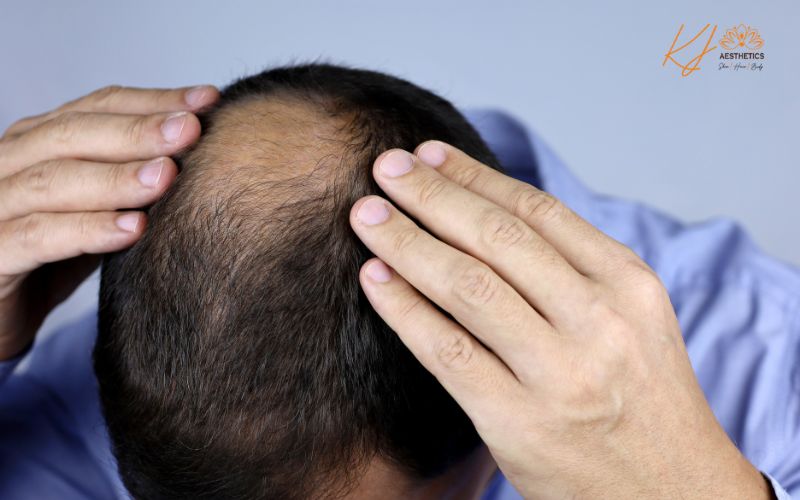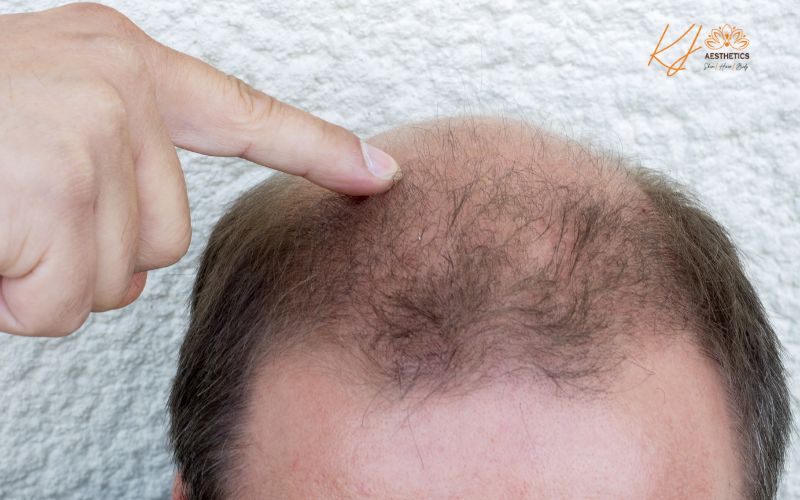Introduction
Hair loss is a common concern that affects millions of people worldwide. While genetics, diet, and stress are well-known contributors, many people overlook the potential impact of their workout routines on hair health. This blog explores the connection between exercise and hair loss, offering insights into how your fitness regime might influence your hair and providing tips on how to maintain both physical health and a healthy scalp. Additionally, we will discuss effective hair fall treatment options to help you address and prevent hair loss.
Understanding Hair Loss
Types of Hair Loss
Hair loss can manifest in various forms, each with distinct characteristics and causes:
Androgenetic Alopecia: Also known as male or female pattern baldness, this genetic condition is the most common cause of hair loss. It typically results in a receding hairline and thinning hair on the crown and temples.
Telogen Effluvium: This temporary form of hair loss occurs when a large number of hair follicles enter the resting (telogen) phase simultaneously, often due to stress, illness, or hormonal changes.
Alopecia Areata: An autoimmune disorder where the immune system attacks hair follicles, leading to patchy hair loss.
Traction Alopecia: Caused by sustained tension on the hair, often due to tight hairstyles.

Common Causes of Hair Loss
Understanding the root causes of hair loss is crucial for effective treatment. Common causes include:
Genetics: Family history of hair loss can predispose individuals to similar patterns.
Hormonal Changes: Conditions like pregnancy, menopause, and thyroid issues can trigger hair loss.
Diet and Nutrition: Deficiencies in essential nutrients such as iron, zinc, and vitamins can weaken hair health.
Stress: Physical or emotional stress can push hair follicles into the resting phase, causing shedding.
Health Conditions: Diseases such as diabetes, lupus, and scalp infections can contribute to hair loss.
The Role of Exercise in Overall Health

Benefits of Regular Exercise
Exercise is widely recognized for its numerous health benefits, including:
Cardiovascular Health: Regular physical activity strengthens the heart and improves blood circulation.
Mental Health: Exercise releases endorphins, which can alleviate symptoms of depression and anxiety.
Weight Management: Helps maintain a healthy weight, reducing the risk of obesity-related diseases.
Improved Sleep: Promotes better sleep quality, which is vital for overall health.
How Exercise Affects the Body’s Systems
Exercise impacts various bodily systems, including:
Endocrine System: Physical activity influences hormone production, which can affect hair growth cycles.
Circulatory System: Improved blood flow ensures that hair follicles receive essential nutrients and oxygen.
Can Your Workout Routine Cause Hair Loss?
Impact of Intense Physical Activity
While moderate exercise is beneficial, intense physical activity can have adverse effects on hair health:
Stress Levels: High-intensity workouts can elevate cortisol levels, a stress hormone that may contribute to hair loss.
Overtraining: Excessive exercise without adequate recovery can lead to physical stress, potentially triggering telogen effluvium.
The Importance of a Balanced Workout Routine
To avoid negative impacts on hair health, it is crucial to maintain a balanced workout routine:
Moderation: Incorporate moderate-intensity exercises rather than extreme routines.
Rest and Recovery: Allow sufficient time for the body to recover between workouts.
How Exercise Can Prevent Hair Loss
Benefits of Moderate Exercise
Moderate exercise can positively influence hair health by:
Reducing Stress: Activities like walking, swimming, and cycling can lower stress levels, reducing the risk of stress-related hair loss.
Improving Blood Circulation: Exercises that boost cardiovascular health enhance blood flow to the scalp, promoting healthy hair follicles.
Exercises that Promote Good Blood Circulation
Certain exercises are particularly effective in improving blood circulation, benefiting hair health:
Cardio Workouts: Running, jogging, and aerobics can enhance overall blood flow.
Yoga and Meditation: These practices not only reduce stress but also promote circulation and balance in the body.
Hair Fall Treatment Options
Overview of Hair Fall Treatments
There are several effective treatments available for hair fall:
Topical Treatments: Minoxidil (Rogaine) is a common over-the-counter treatment that can stimulate hair growth.
Medications: Finasteride (Propecia) is a prescription medication that can slow hair loss and promote regrowth.
Lifestyle Changes: Improving diet, reducing stress, and avoiding hair-damaging practices can significantly impact hair health.
Role of Diet and Nutrition
Nutrition plays a crucial role in maintaining healthy hair. Key nutrients include:
Protein: Essential for hair structure and growth.
Iron: Supports red blood cell production, which nourishes hair follicles.
Vitamins A, C, D, and E: Important for overall scalp and hair health.
Omega-3 Fatty Acids: Found in fish and flaxseeds, these fats promote hair density.
Tips for an Effective Workout Routine to Support Hair Health
Balancing Different Types of Exercise
A well-rounded workout routine should include:
Cardio: For overall health and improved circulation.
Strength Training: Builds muscle and supports metabolic health.
Flexibility Exercises: Yoga and stretching improve range of motion and reduce stress.
Importance of Rest and Recovery
Adequate rest is essential for preventing overtraining and promoting overall health:
Sleep: Aim for 7-9 hours of quality sleep per night.
Recovery Days: Include rest days in your workout schedule to allow the body to heal and rebuild.
Integrating Stress-Reducing Activities
Incorporate activities that reduce stress into your routine:
Yoga: Combines physical postures, breathing exercises, and meditation.
Meditation: Helps calm the mind and reduce cortisol levels.
Additional Tips for Healthy Hair
Proper Hair Care Practices
Maintaining healthy hair involves proper care:
Gentle Washing: Use mild shampoos and avoid over-washing.
Conditioning: Regular conditioning helps keep hair moisturized and less prone to breakage.
Avoiding Harsh Treatments: Limit the use of heat styling tools and chemical treatments.
Importance of a Balanced Diet
A diet rich in essential nutrients supports healthy hair:
Fruits and Vegetables: Aim for 7-9 hours of quality sleep per night.
Lean Proteins Support hair growth and repair.
Healthy Fats: Found in nuts, seeds, and avocados, these fats nourish hair.
Avoiding Common Hair-Damaging Habits
To protect your hair, avoid:
Tight Hairstyles: Styles that pull on the hair can cause traction alopecia.
Excessive Heat: High temperatures from styling tools can damage hair cuticles.
KJ Aesthetics: Your Partner in Hair Health
At KJ Aesthetics, we understand the importance of maintaining healthy hair and overall well-being. Our clinic offers a range of hair fall treatment options tailored to meet your individual needs. From advanced topical treatments to personalized nutrition and wellness plans, our expert team is dedicated to helping you achieve optimal hair health. Whether you're looking to address hair loss or prevent it, we provide comprehensive solutions to support your journey to healthy, beautiful hair.
Conclusion
Maintaining a healthy workout routine can significantly impact your hair health. While intense exercise and overtraining can contribute to hair loss, moderate and balanced physical activity can reduce stress and improve circulation, promoting healthy hair growth. Along with proper hair care practices and a nutrient-rich diet, these measures can help you maintain both physical health and a healthy scalp. If you experience persistent hair loss, consider consulting a healthcare provider for personalized hair fall treatment options.

